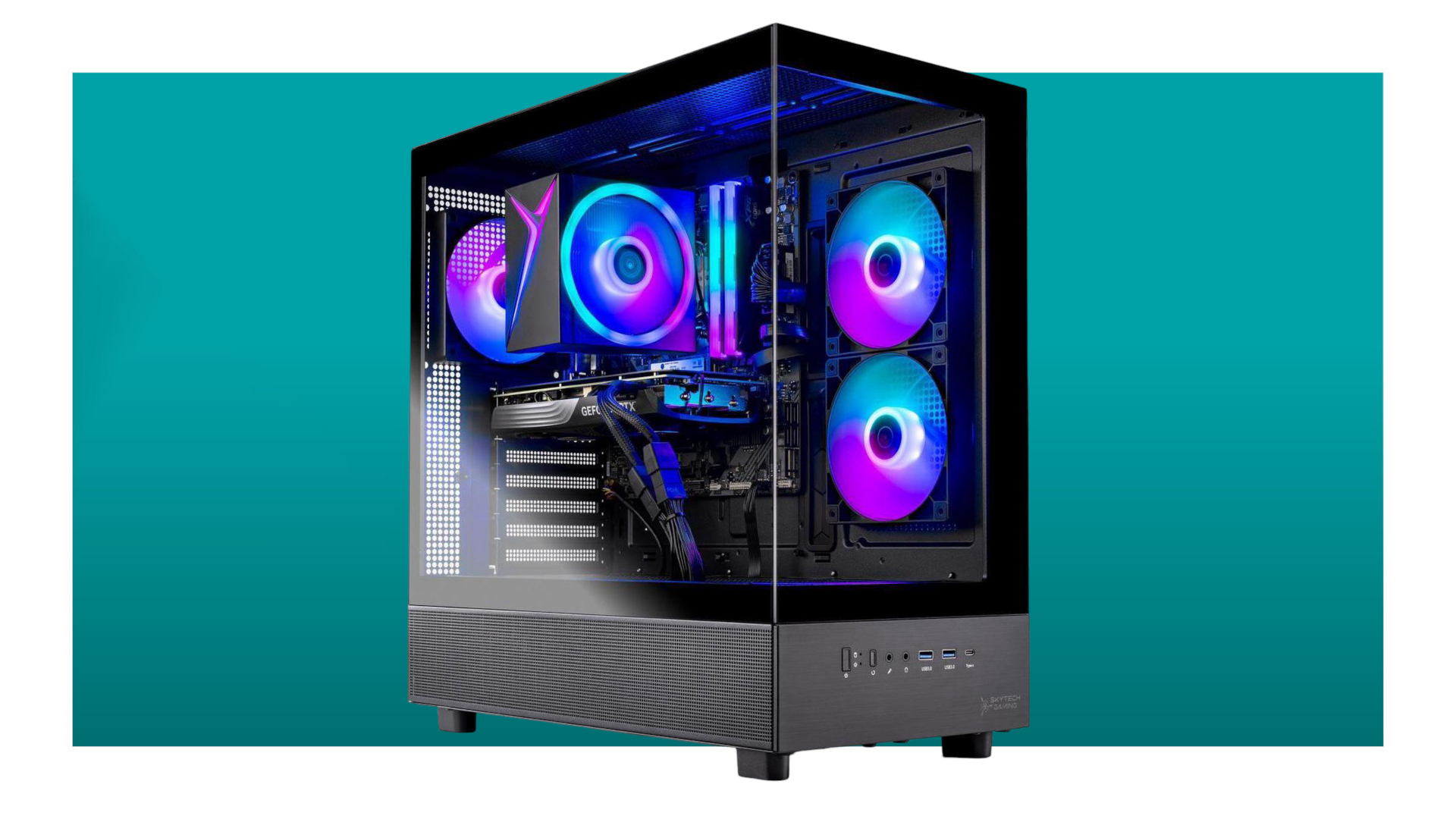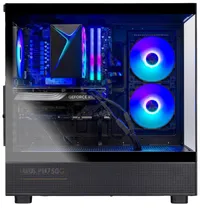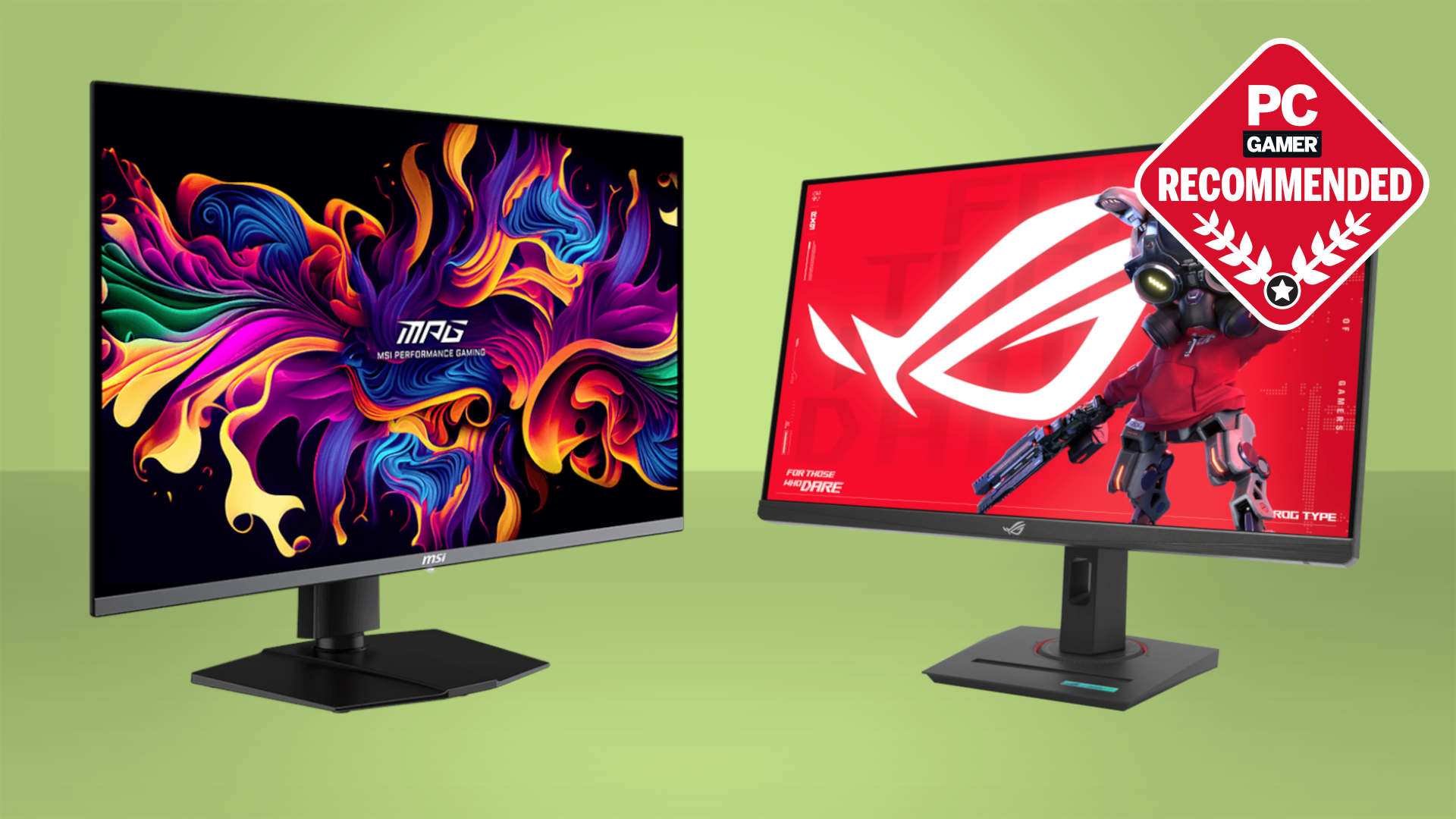Rip and tear into Doom: The Dark Ages with $300 off this easily upgradeable RTX 5070 gaming PC
$1,500 gets you a whole lot of gaming goodness. You know, for wading through hordes of Hell's minions and whatnot.

Skytech Azure | RTX 5070 | Ryzen 5 7600 | 16 GB DDR5-6000 | 1 TB SSD | $1,799 $1,499.99 at Newegg (save $300)
With prices for PC components all over the place at the moment, it's hard to know what makes the difference between a good deal and an average one. This stands out from the rest because it has a sensible price and a base platform that you'll be able to easily upgrade over time.
Price check: Amazon $1,729.99 (Ryzen 7 7700X + 32 GB DDR5 model)
These aren't the best times for buying a new gaming PC, as the whole market is still rather nervous about the long-term effects of import tariffs affecting the prices of CPUs, graphics cards, and other components. Fortunately, if you know what to look for, you can still pick up a nice deal or two, and this one is especially good.
Let's start with the most important part: the GPU. It's a GeForce RTX 5070, and I recently used one for my performance analysis of Doom: The Dark Ages. To coin a phrase from the game's franchise, the 5070 absolutely rips and tears through the always-on ray tracing.
Housed in a Core Ultra 7 265K platform, which isn't the best for gaming, the RTX 5070 achieved an average frame rate of 72 fps at 1440p with the Ultra quality preset. That's natively, by the way, and with some hot DLSS 4 action, you can push the performance figures over 100 fps by just using Quality-mode upscaling.
So yes, it's more than fast enough for 1080p and 1440p gaming, and with upscaling or frame generation, it'll even handle 4K. Admittedly, you'll need to use DLSS Performance upscaling, and probably frame generation with it, but at least all the options are there for you.
The rest of the Skytech Azure gaming PC isn't as latest-and-greatest as the RTX 5070 but it's still more than good enough. Handling all of the main processing duties is an AMD Ryzen 5 7600—that's a six-core, 12-thread CPU with a boost clock of 5.1 GHz and a TDP of just 65 W.
It's been paired with 16 GB of DDR5-6000 RAM, running at the sweet spot for Ryzen processors in terms of clock speed, though Skytech doesn't state the latencies for the RAM kit. Even if it isn't the snappiest DDR5 you can get, it'll be fast enough for you to not worry about it in games.
Doom: The Dark Ages | Ultra preset
There's only 1 TB of Gen4 NVMe storage, but that's par for the course with many such prebuilt gaming PCs. All of the Skytech rigs I've seen will let you install at least one more M.2 SSD, and you can pick up some big, speedy storage for relatively little money these days, so it's easy enough to upgrade this aspect of the gaming rig in the future.
On the point of upgrading, this is why this particular deal stands out to me. Sure, that Ryzen 5 7600 isn't the latest or best gaming CPU you can buy, but thanks to the AM5 socket motherboard used in the Skytech, you can swap for a more powerful chip whenever you want.
The same is true of the graphics card—the chassis has bags of space to house a larger and faster graphics card, and that 850 W PSU will be good for more power-hungry GPUs, too.
If you're going to splash out on a new PC, then you could do far worse than this one: It's got the performance chops for all of today's games, and it'll be a piece of cake to upgrade it further down the road. When the market, prices, and....well...everything settles back down.
Keep up to date with the most important stories and the best deals, as picked by the PC Gamer team.

Nick, gaming, and computers all first met in the early 1980s. After leaving university, he became a physics and IT teacher and started writing about tech in the late 1990s. That resulted in him working with MadOnion to write the help files for 3DMark and PCMark. After a short stint working at Beyond3D.com, Nick joined Futuremark (MadOnion rebranded) full-time, as editor-in-chief for its PC gaming section, YouGamers. After the site shutdown, he became an engineering and computing lecturer for many years, but missed the writing bug. Cue four years at TechSpot.com covering everything and anything to do with tech and PCs. He freely admits to being far too obsessed with GPUs and open-world grindy RPGs, but who isn't these days?
You must confirm your public display name before commenting
Please logout and then login again, you will then be prompted to enter your display name.


